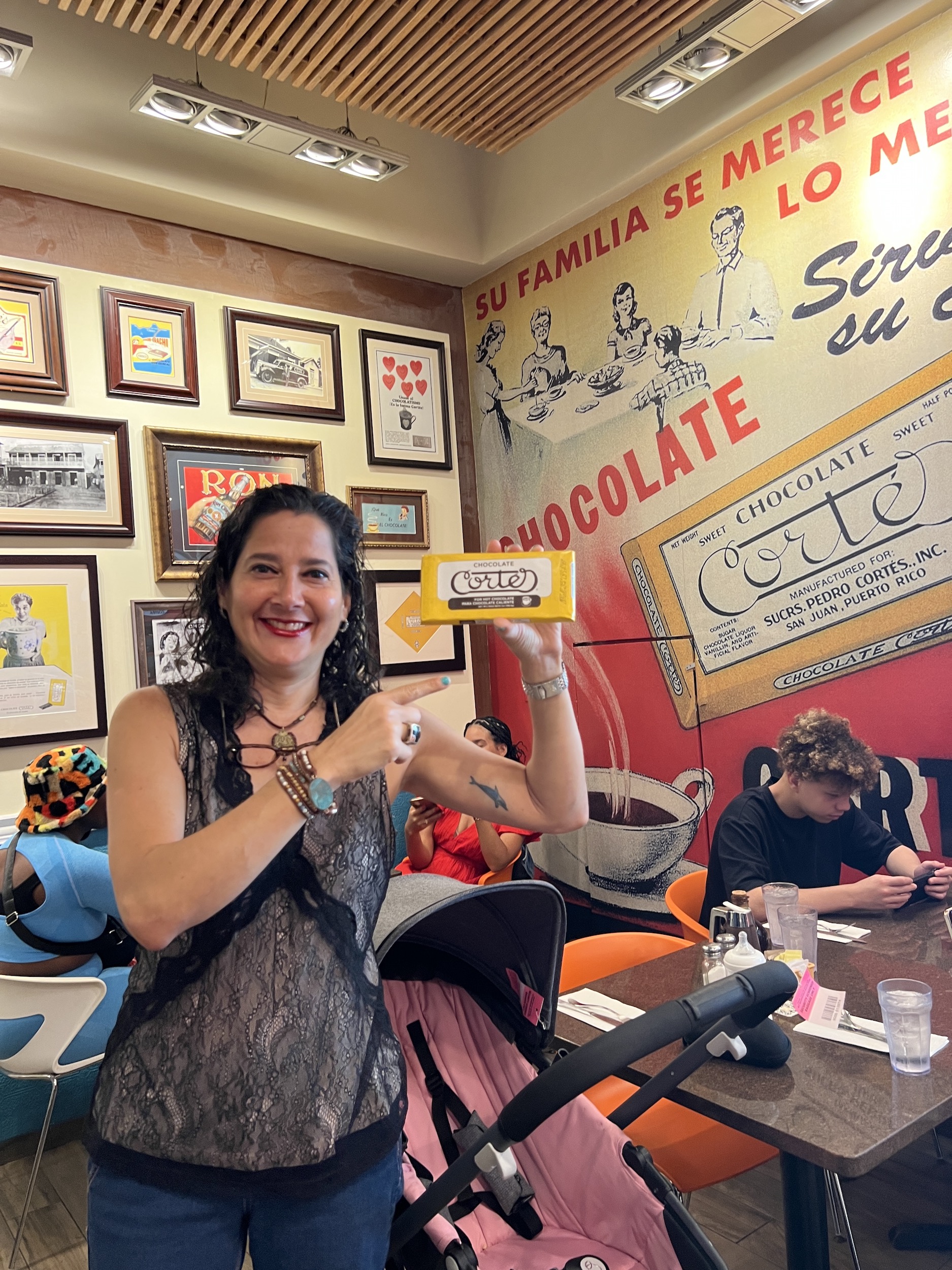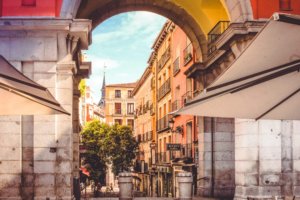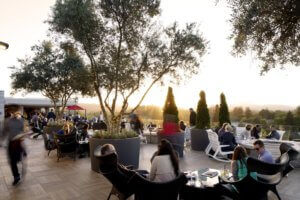Puerto Rico Chocolate Experience
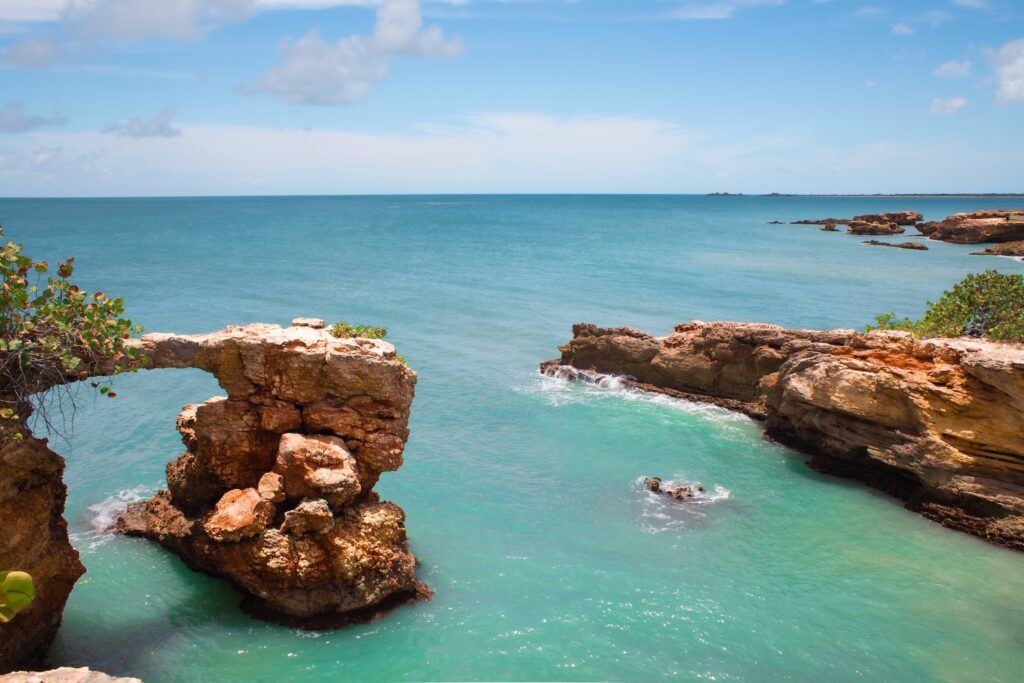
Puerto Rican Chocolate Experience
One of the reasons I wanted to see Puerto Rico is to experience a real cocoa farm – and then take advantage of that opportunity to visit the famous chocolate cafes and shops of Old San Juan.
Before we get to the fun part (the shops and chocolate tasting) here’s a brief history of chocolate in Puerto RIco.
Cocoa Production in Puerto Rico
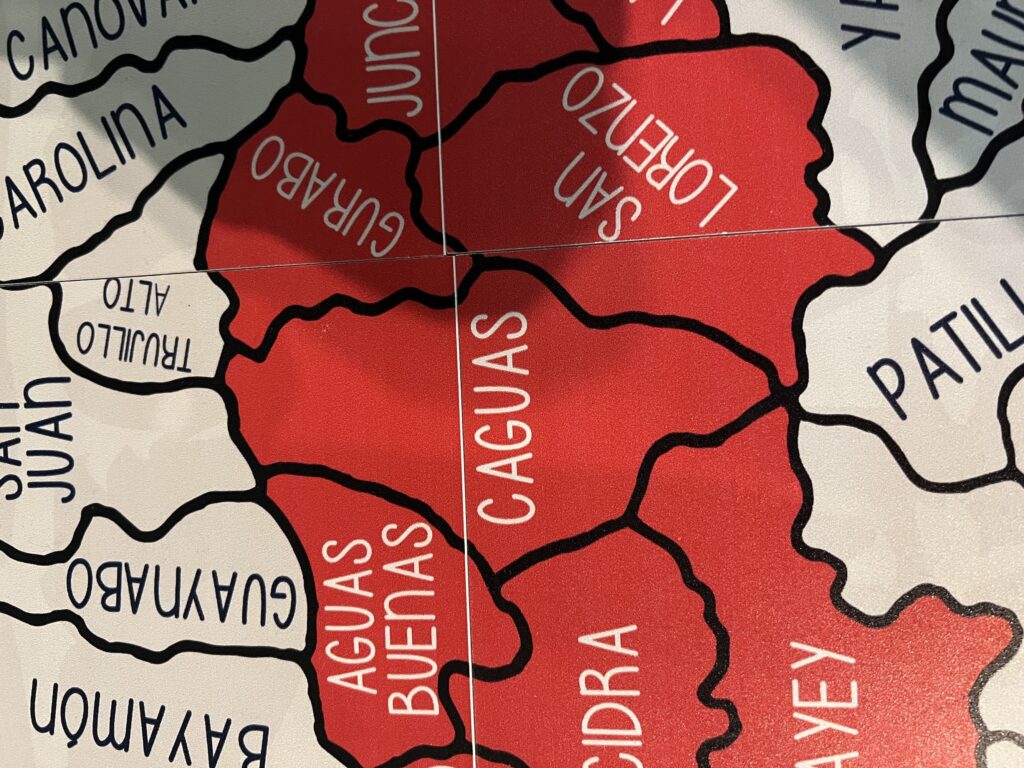
The story of cocoa production in Puerto Rico is a narrative that is interwoven with the island’s rich cultural tapestry and its vibrant history.
As we journey from the inception of cocoa farming to its modern practices, we appreciate the golden beans that have given the Puerto Rican chocolate its distinguished place in the world of gastronomy.
Early Cocoa Production Beginnings
The birthplace of cocoa, the Americas, has been home to this majestic crop for thousands of years. In Puerto Rico, a lush island graced with fertile lands and a tropical climate.
Here cocoa found a welcoming home.
The earliest traces of cocoa production in Puerto Rico can be traced back to the Spanish colonial period. Yet, it took a while for cocoa to become a staple, as sugar cane took center stage during the initial phases of agricultural development.
The Flourishing Period of Puerto Rican Chocolate
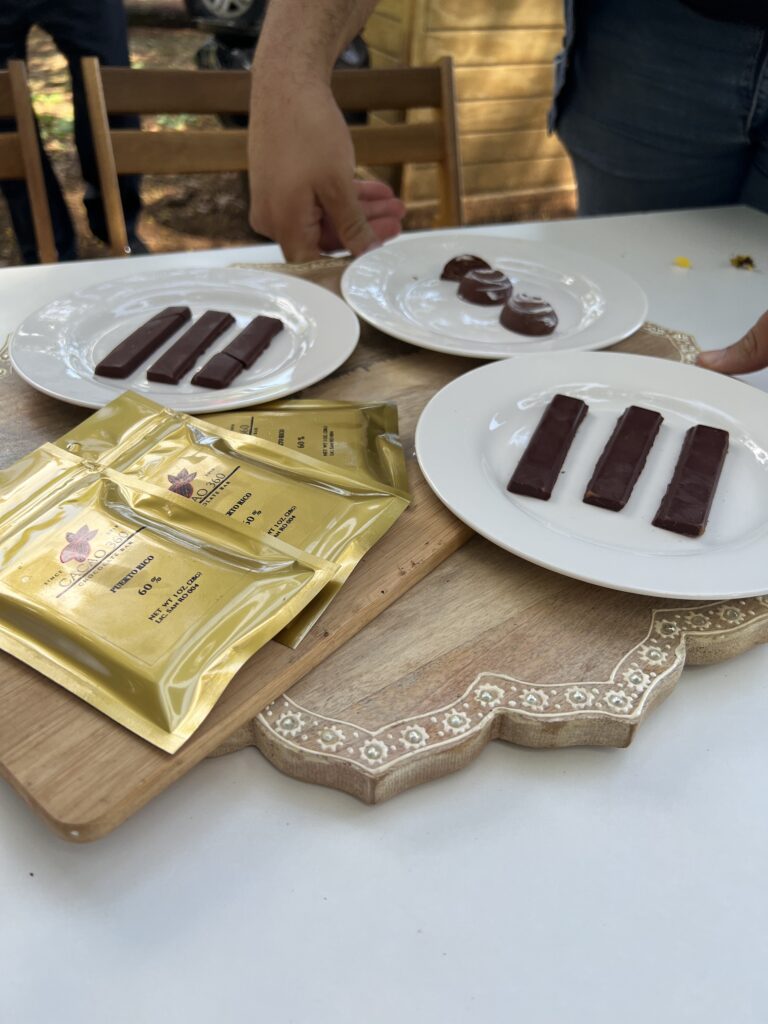
Cocoa started to significantly flourish in the late 19th and early 20th centuries. Farmers recognized the potential of the land, the ideal climate conditions, and the rich, volcanic soil, which were perfect for nurturing the cocoa trees.
Plantations burgeoned, and cocoa became a crucial economic driver for Puerto Rico, with exports reaching international markets.
Planting the Cocoa Beans
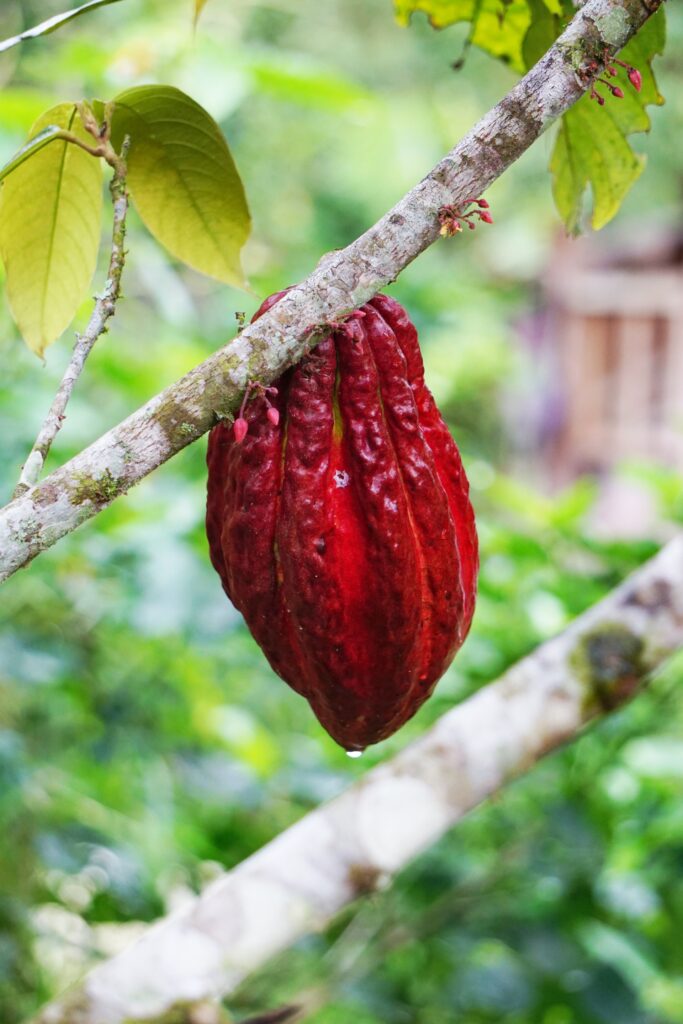
Cocoa trees thrive in Puerto Rico’s tropical climate, which offers a perfect blend of rain and sunshine. The process of planting cocoa is a meticulous one that commences with the selection of high-quality seeds. Farmers prioritize seeds that are resistant to diseases and can yield a rich harvest.
To plant cocoa, farmers prepare the land meticulously, ensuring optimal soil conditions to nurture the young saplings. The plants are generally placed in shades to protect them from direct sunlight, leveraging the canopy of taller trees to provide the necessary shade. This method not only ensures the healthy growth of the cocoa trees but also promotes biodiversity, creating a haven for various flora and fauna.
The Cocoa Renaissance
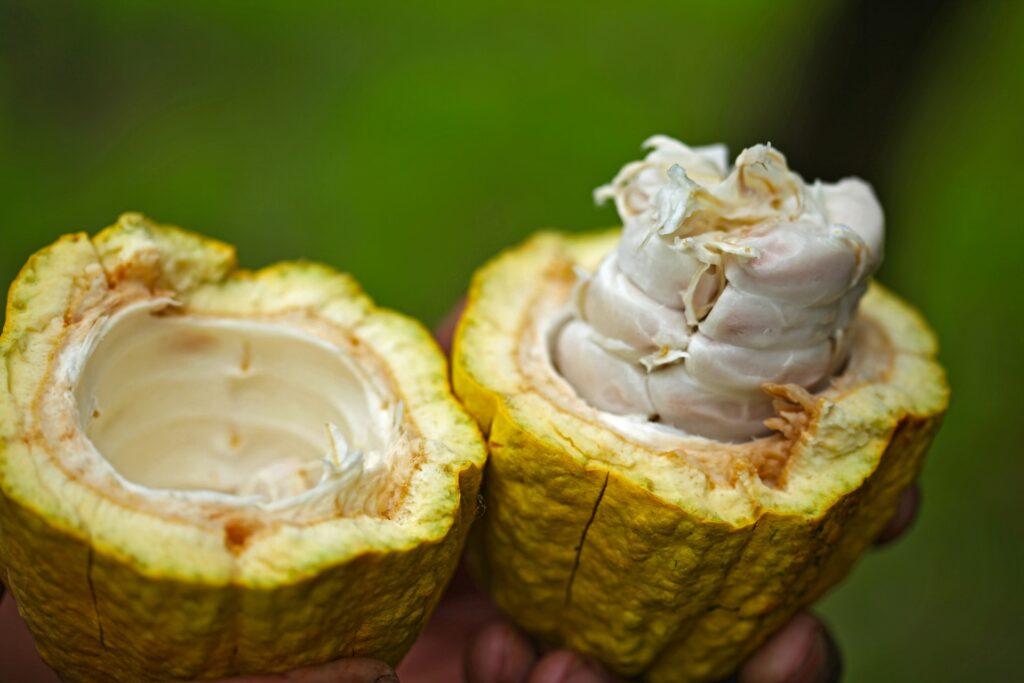
Puerto Rico witnessed a decline in cocoa production in the latter part of the 20th century due to a combination of factors including natural disasters, economic challenges, and the onset of pests and diseases that affected the yield. However, in recent years, there has been a resurgence, a sort of renaissance in the cocoa farming sector.
The new generation of farmers, equipped with modern knowledge and a profound respect for the land, has adopted sustainable and organic farming practices. Innovations in farming techniques, a focus on fine flavor cocoa, and direct trade have brought a revitalization in the industry, encouraging more farmers to return to the cocoa fields.
The Fine Flavor Revolution
An essential aspect of Puerto Rico’s modern cocoa industry is the emphasis on fine flavor cocoa, which is a category of cocoa beans renowned for their superior quality and distinctive flavor profiles. This transition to a quality-over-quantity approach has fostered a premium market where Puerto Rican chocolate can compete with the best in the world on flavor, aroma, and complexity, rather than just price.
The farmers work in harmony with chocolatiers, ensuring that the beans’ unique flavors are retained throughout the production process. It is a collaborative journey, where each cocoa bean tells a story of the land it came from, encapsulating the essence of Puerto Rico in every bite.
The Semila Cocoa Farm Experience
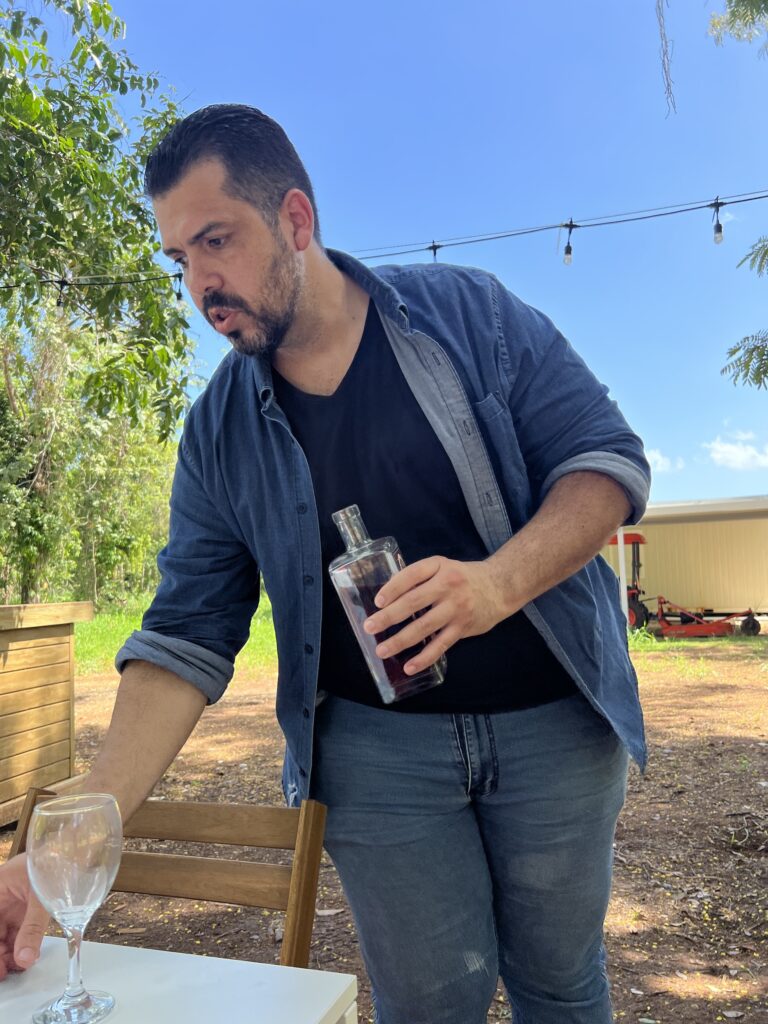
Visit to Cocoa Farm
I was able to visit a cocoa farm called Semila now a woman-owned business with Decenia Vega, daughter of founders, in charge.
The estate spans 43 acres of raw land, cocoa plants, and trees bearing tropical fruit.
Decenia has modernized techniques and equipment over the years, but stays true to her parents’ focus on sustainability and organic farming practices. The nursery uses bio-pesticides and natural compost, while the orchard relies on shade cover rather than synthetic chemicals for pest management.
The Semila Tasting Experience
Decenia’s chef husband gave us a chocolate tasting right in the middle of their jungle-like property, in which we tasted chocolate made from their high-quality beans with Siervas Passion Fruit flavored whisky. A delicious pairing.
The Chocobar Cortes Experience
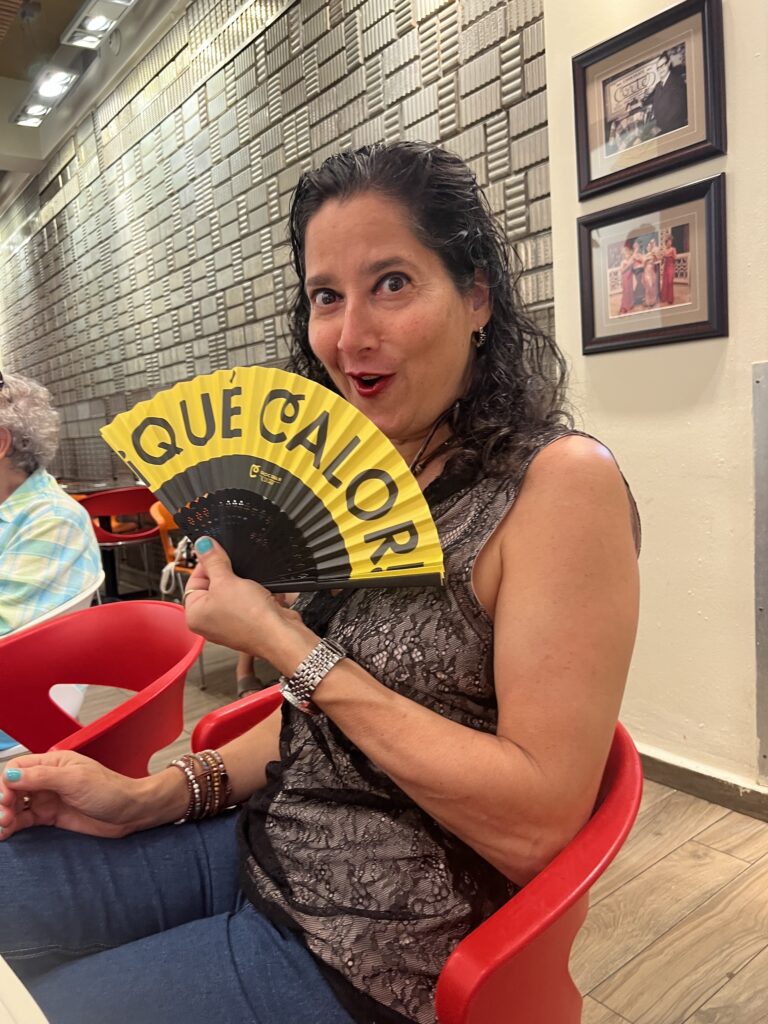
In the heart of Old San Juan, where the cobblestone streets wind their way through colorful colonial buildings, a small chocolate shop stands as a beacon of creativity and community.
Stepping into this unique, colorful cafe and shop is like stepping into an amusement park. The scent of chocolate is everywhere.
Even the delicious cocktails can be chocolate-infused!
As I met with the Chocobar Cortez owner Elaine Shehab, I was given hot chocolate and a cube of cheddar cheese, and then advised to put the cheese into the chocolate. This is a Cortes tradition, and the result was a creamer experience
As I learned about the history of the place I sampled many things on the extensive brunch menu – offerings include French Toast, salads, and salmon.
Virtually everything on the menu has a chocolate element, such as chocolate shavings or chocolate salt.
I loved the colorful decorations, bright yellow walls, and overall cheerful ambiance of this place that was bustling with people every time I walked by it.
Owner Elaine Shehab
Elaine is the creative mind behind Chocobar Cortés. Together with her husband, Ignacio Cortés, CEO of Chocolate Cortés, she played with the idea of opening a chocolate concept for many years. After thorough research around the world, they set out to create a unique concept that celebrated the family’s rich history where Chocolate Cortés played the starring role.
Fundación Cortés
Established in 2012, Fundación Cortés is a private non-profit organization that, through art and humanities, seeks to promote the strengthening of the values of the Caribbean people. It’s located on the second and third floor above the restaurant and features temporary exhibitions. Adelisa Gonzalez-Lugo is its executive director and creates dynamic programs.
Montadero Chocolates
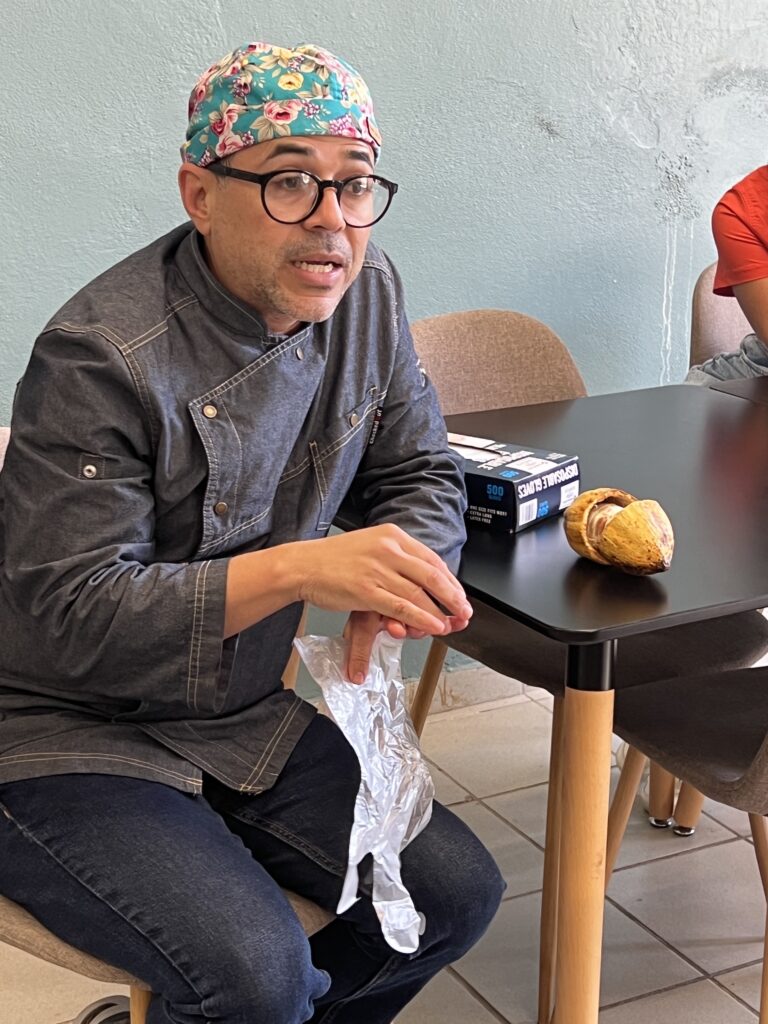
As I sat down with the owner of Montadero Chocolate, I couldn’t help but be drawn into the rich tapestry of their family history.
The story of Montadero Chocolate begins with a matriarchal figure, Doña Mita, the grandmother of the current owner. She was the guardian of a unique culinary tradition, one that revolved around the art of making chocolate.
“As children, we were fortunate enough to have experienced her chocolate creations firsthand. Doña Mita’s secret was the cacao grown on a family farm.”
“In her own childhood, Doña Mita learned the meticulous process of fermenting, roasting, and refining cacao to create the most exquisite hot chocolate, following her father’s cherished recipe. But as fate would have it, when our beloved grandmother passed away, this precious tradition was on the brink of extinction.”
“None of her children had learned the art of making chocolate, despite knowing the recipes by heart.”
“It was only in 2017, during an unexpected journey to Switzerland, that the spark to revive the family’s chocolate tradition was kindled. My wife, Kenia, and I had embarked on a trip dedicated to cheese tasting, but fate had other plans.
“Hurricane Maria swept through Puerto Rico, leaving destruction in its wake. The very farm that held the key to our family’s chocolate heritage lay in ruins. It was at that moment that I felt a profound sense of responsibility – a duty to restore what had been lost, so that our family tradition could live on.”
“Our journey to resurrect the art of making chocolate began with interviews with family members. Slowly but surely, we gathered the necessary information to rekindle the tradition. We embarked on exploratory trips to the mountains where our great-grandfather had harvested cacao, delved into countless conversations with our family, and painstakingly recovered the treasured recipe of Grandma Mita.”
Montadero Chocolate is more than just a homage to the family’s past; it’s a commitment to quality and authenticity. Their cacao is meticulously selected, ranked among the best 50 cacaos worldwide, promising the most indulgent chocolate experience for connoisseurs.
With each bite of our artisanal chocolates, the owners hope you taste not just the richness of the cacao but also the history, love, and dedication that goes into every piece
Conclusion
The journey of cocoa production in Puerto Rico is one steeped in a rich history, a testament to the resilient spirit of the island and its people. From the early days of colonial settlements to the vibrant and sustainable industry today, cocoa production has undergone a transformative journey.
As we indulge in a piece of Puerto Rican chocolate, we are not just enjoying a gastronomic delight; we are partaking in a heritage, a tradition, and a story of revival and resilience.
The future of Puerto Rican cocoa looks promising, a path paved with golden beans, leading to a sustainable and flavorsome future.

